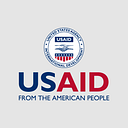Partnering to Protect Nepali Students’ Right to Education
Temporary classrooms built after the 2015 earthquake by USAID and UNICEF provide safe environments for young Nepali minds to learn
In Nepal, as in other countries, access to education is directly linked to higher incomes, better jobs, and more economic growth. However, the earthquake that struck on April 25, 2015, severely damaged 47,000 classrooms — disrupting classes, interrupting the education of nearly one million students, and causing Nepal to backslide on areas of significant development progress.
Rajamati Basic School in Nuwakot district, was severely damaged. Of the school’s four buildings, three collapsed. While no students were injured, only the school’s administrative wing remained upright — yet the building had cracks everywhere.
To bring students back to this school, a local, non-profit organization initially built makeshift classrooms using local bamboo mats as walls. While these structures allowed the school to resume, attendance kept plummeting. Students that did attend had to sit on cold floors, and teachers found that they could not teach proper lessons. Instead, they resorted to telling stories or allowing students to play on the school grounds.
“It was a very difficult time for us during the first two years,” said Headmaster Sitalal Tamang. “We did not have a safe building or proper classrooms. We did not even have desks or carpeting. Many of the children fell sick and stopped coming to school.”
In 2017, USAID and UNICEF joined to help restore this school and build four transitional learning structures (TLSs) to support 57 students in early childhood development and first through third grades. These modern classrooms were made of steel and concrete, carpeted and equipped with ceiling fans for the hot summer months. These durable, semi-permanent structures enabled the school — and other small schools in hard-to-reach areas — to provide safe learning environments for students.
In addition to these classrooms, the USAID-UNICEF partnership built separate restrooms and drinking water stations, and provided schools with new books, teaching and learning materials, white boards, erasers, markers, posters, charts, sports equipment, and toys.
Buddhimaya Tamang, a grade three student, was extremely happy with her new classroom.
“It was dirty before,” she said. “We now have a carpet and cushions, and the desks and benches are new. I feel good being in the classroom. I feel like staying here.”
But, it is not just the students who are enjoying the new classrooms — the parents are excited too.
Sunmaya Tamang, a member of the school management committee and a parent with two sons in first and fifth grade, remarked, “The school has really provided a learning environment for the students…These classrooms are much cleaner than before. They even have drinking water.”
The changes in the classrooms have had a ripple effect, inspiring more students to regularly attend school and enabling teachers to instruct attentive students in a safe and motivating environment.
“We have been able to run classes much more systematically after these TLSs were built,” said Sitalal. “Due to lack of classrooms, we were unable to teach properly. But, after these rooms were built, student attendance has increased. Almost half the students would not come to the school when we had only the makeshift rooms. But, with these TLSs, more than 95 percent of students come to class on a regular basis.”
“It is my experience that the environment of the classroom plays a big role in teachers’ motivation,” he continued. “We feel excited to come and teach in the new classrooms.”
Before USAID and UNICEF intervened in 2017, the school didn’t have adequate teaching and learning materials to prepare students for exams. Today, the new educational materials are proving crucial, especially to the early childhood education classes that needed them the most.
“There is a vast difference between using and not using these materials. It’s like using a flashlight versus fumbling around in the dark,” Sitalal said. “Students learn more easily through the use of diagrams, songs, and storytelling. They understand the topic more easily and effectively.”
“I am very happy with the improved level of learning of our students,” he continued. “It shows we have achieved our objectives.”
When the 2015 earthquake placed Nepal in danger of losing its educational gains, the USAID-UNICEF partnership responded by constructing over 1,000 temporary shelters for nearly 94,000 students and built 250 TLSs to enable about 7,500 students to continue their education in safe learning spaces until more permanent schools may be rebuilt.
Four years since the earthquake, small and remote schools like Rajamati Basic School are still waiting for funds to rebuild. However, the temporary classrooms are providing safe and productive environments for young Nepali minds to exercise their human right to education so that they may — one day — have the knowledge and skills to lead their country.
About the Authors
Pamala Horugavye is the Senior Development Outreach and Communication Specialist for USAID’s Mission in Nepal. Pravaran Mahat is the Development Outreach and Communication Specialist for USAID’s Mission in Nepal.

